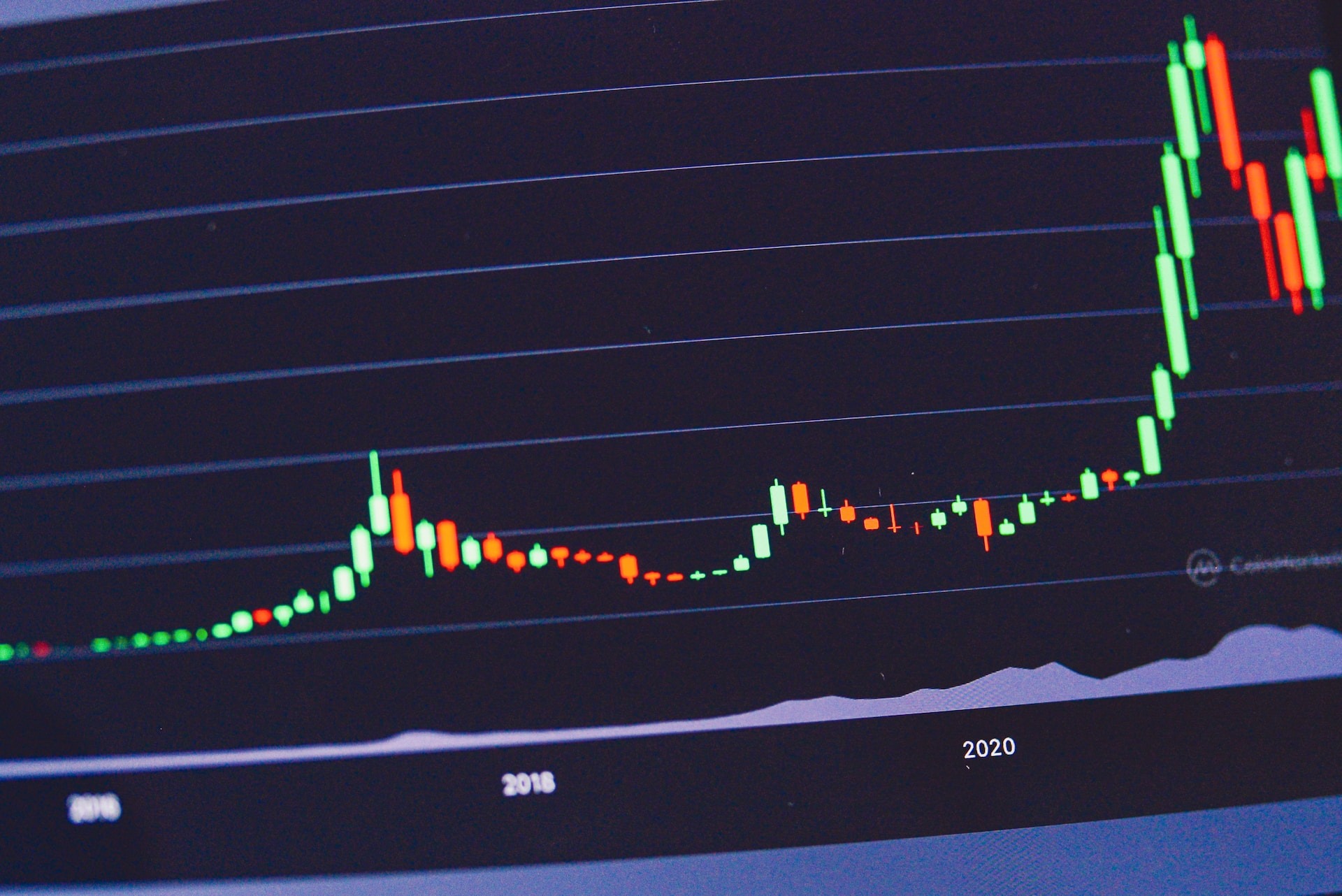Introduction
The first and most important step in the process of developing meaningful and insightful visualizations is data preparation. It is the process of transforming raw data into a format that is not only understandable but also lends itself well to analysis.
Data preparation is comparable to the process of an astronomer thoroughly collecting data across the universe. This process involves cleaning, organizing, and transforming the data to reveal its underlying patterns and insights. This crucial phase lays the groundwork for the subsequent stages of data visualization, ensuring that the final visual representations are not only aesthetically pleasing but also accurate and informative. It does this by setting the stage.
In this field, paying close attention to the details and having a keen eye are of the utmost importance because they lay the groundwork for revealing the story that is concealed within the data. In this post, we will delve into the significance of data preparation and its key role in the art of data visualization.

What is Data Preparation?
Data preparation is a crucial procedure that involves refining unprocessed data to render it appropriate for analysis and visualization purposes. The process encompasses multiple stages, including data cleansing, organization, and transformation, to reveal significant patterns and insights. This critical stage ensures that the data is formatted in a manner that is both easily accessible and facilitates precise interpretation. The process of data preparation plays a crucial role in facilitating the development of informative and visually captivating data visualizations. Unveiling the underlying narrative inherent in the data necessitates a meticulous focus on detail and a discerning methodology.
Data Collection
- The act of methodically gathering information, either from a wide variety of sources or by utilizing a predetermined set of procedures, is known as data collection. The process entails the gathering of unprocessed information, such as raw facts, figures, or observations about a specific topic or phenomenon.
- This method may make use of a wide variety of approaches, such as questionnaires, in-person interviews, or even fully automated systems and sensors. The data that has been collected can be qualitative or quantitative, and it is this data that will serve as the foundational material for the subsequent analysis and interpretation.
- It is essential to collect data efficiently to generate accurate insights and make decisions that are informed across a variety of domains, including business operations and scientific research. It serves as the foundation upon which meaningful inferences and courses of action can be constructed.
Data Cleaning
- Data cleaning is a fundamental procedure that involves the identification and correction of errors, inconsistencies, and inaccuracies present in a given data. The process entails a thorough analysis of the data to identify irregularities, such as the presence of missing values, outliers, or duplications.
- To ensure the accuracy and reliability of the dataset, various corrective measures such as imputation, interpolation, or removal are employed to address these imperfections. The process of data cleaning is of utmost importance in the preparation of data for analysis and visualization, as the presence of clean data is crucial for generating accurate and significant findings.
- Ensuring data cleanliness is an essential component of the data pipeline, as it serves to mitigate the potential for misinterpretations and erroneous conclusions that can arise from unprocessed data. In addition, the process of data cleaning plays a pivotal role in establishing a reliable and resilient framework for making informed decisions based on data.
Data Transformation
- In the context of data utilization, “data transformation” refers to the process of converting and manipulating raw data into a format that is better suited for analysis, modeling, or visualization. This can be accomplished through several different methods. Normalization, aggregation, scaling, and feature engineering are all examples of common operations that may be performed during this step.
- The process of normalization converts the data to a standardized scale, which makes comparison and analysis much simpler. When data are aggregated, they are combined into summary statistics, which provide a more comprehensive view of patterns and trends.
- Scaling refers to the procedure of modifying the range of variables to equalize their impact on analytical processes. Feature engineering refers to the procedural undertaking of creating novel variables or modifying existing ones to enhance the precision of predictive models.
- To properly prepare the data to be provided into algorithms or used in visualizations, these transformations are necessary. They have the potential to aid in the discovery of previously hidden patterns, the reduction of noise, and the improvement of the analytical models’ accuracy. The transformation of the data is an essential step in the process of utilizing the data because it paves the way for the generation of insights that are both more meaningful and more trustworthy from the raw data.

What Are the Purposes of Data Preparation
- When raw data is being prepared for processing and analysis, one of the primary purposes of data preparation is to ensure that the data is accurate and consistent. This is done to ensure that the results of business intelligence (BI) and analytics applications will be valid. When data is created, it will frequently contain inaccurate values, missing values, or other errors. Additionally, separate data sets will frequently have different formats, which will need to be reconciled before they can be combined. An important component of data preparation projects is the elimination of data inaccuracies, verification of data quality, and combination of data sets.
- Finding relevant data is also part of the data preparation process. This helps to ensure that analytical applications deliver meaningful information and insights that can be put to use in decision-making for businesses. To make the data more informative and useful, it is frequently enriched and optimized. This can be accomplished, for instance, by combining internal and external data sets, developing new data fields, removing outlier values, and addressing imbalanced data sets, all of which have the potential to skew analytical results.
- The data preparation process is also used by business intelligence (BI) and data management teams to curate data sets for business users to analyze. When this is done, business analysts, executives, and workers can benefit from streamlined and guided self-service BI application processes.

What Are the Benefits of Data Preparation?
Data analysts frequently bear frustrations that the majority of their workday is spent not analyzing the data, but rather collecting, cleaning, and organizing it. They and other end users will be able to concentrate more on data mining and data analysis if the data preparation process is efficient.
These are the aspects of their job that are responsible for creating value for the company. For instance, data preparation can be completed in less time, and users of recurring analytics applications can have their data preparations delivered to them in an automated fashion. In the context of data analysis and visualization, data preparation confers several important advantages, including the following:
Improved Data Quality
- The process of data preparation refers to the activities of cleansing and refining the dataset, to mitigate errors, outliers, and inconsistencies. This practice guarantees the accuracy and reliability of the data utilized for analysis.
Enhanced Accuracy and Reliability
- The utilization of clean and well-structured data enhances the precision of outcomes in both analysis and visualization processes. By employing this approach, the probability of making erroneous inferences due to flawed or insufficient data is diminished.
Increased Efficiency
- Data that has been properly organized is more manageable to modify and analyze. The implementation of this approach decreases the duration dedicated to data cleaning and problem-solving, enabling analysts to concentrate on the extraction of valuable insights and the creation of visual representations.
Facilitates Effective Analysis
- The foundation for a meaningful analysis is provided by data that has been appropriately prepared. It makes it possible to conduct an investigation into the data’s tendencies, patterns, and relationships in a more in-depth manner.
Enables Complex Modeling
- The construction of complex analytical models requires first having access to data that has been thoroughly cleaned and organized. This is especially important when it comes to the use of statistical modeling and machine learning.
Supports Visual Clarity
- In data visualization, the quality of the underlying data has a direct impact on the visual output’s quality, which in turn has a direct impact on how useful the data is. When the data are clean, the visualizations that result are more accurate and informative.
Enhances Interpretability
- Data that is easy to understand and interpret is data that is clear and well-prepared. It makes certain that the insights that can be garnered from the data are effectively communicated to the various stakeholders.
Reduces Errors and Bias
- Incomplete or incorrect information can give rise to biases, which can then be identified and corrected with the assistance of data preparation. This helps to ensure that the analysis is conducted fairly and objectively.
Facilitates Data Integration
- When working on projects that require combining data from multiple sources, careful data preparation is necessary to ensure that the various datasets can be combined without any hiccups.
Reduces Risks and Uncertainties
- Data preparation helps identify and address potential sources of uncertainty or inconsistency in the data, thereby reducing the risks associated with inaccurate information. This is accomplished through the process of validating and cleaning the data.
Enhances Decision-Making
- A reliable foundation for making accurate choices based on the evidence and insights derived from the analysis can be provided by data that has been well prepared.
The process of data preparation is beneficial in the case of big data environments, where a diverse range of data types, including structured, semi-structured, and unstructured data, are stored in their raw format until they are required for specific analytical purposes.
These applications encompass predictive analytics, machine learning (ML), and other variants of advanced analytics that typically necessitate extensive data preparation. The process guarantees the utilization of precise, dependable, and appropriate data for the intended objective, resulting in enhanced decision-making and proficient dissemination of insights.
Design Principles
The process of design principles is important in the context of data visualization, as it serves the purpose of ensuring that the data is appropriately formatted for optimal representation. Below are the different types of design principles that are crucial to the process of data visualization.
Color Theory
- The concept of color theory in data visualization is a fundamental aspect that examines the strategic selection and combination of colors to effectively communicate information. This study explores the fundamental concepts of color harmony, contrast, and perception to improve the clarity and effectiveness of visual depictions of data.
- Data visualizers use color in a manner that is analogous to the way a painter chooses colors to evoke particular feelings or communicate a particular message. Color is used to draw attention to patterns, emphasize key points, and differentiate between categories or data points. By having an understanding of color theory, designers can make educated decisions regarding color palettes, thereby ensuring that their work is accessible to all viewers, including those whose color vision is impaired.
- In addition, color theory takes into account the psychological and cultural associations that various colors may evoke in different people. For instance, warm colors such as red or orange may indicate a sense of immediacy or significance, whereas cool colors such as blue or green may evoke a sense of calm or represent positive trends. Data visualizations can be made more user-friendly, engaging, and effective by utilizing these principles, which in turn makes it easier to acquire a more in-depth comprehension of the data that is being visualized.
Layout and Composition
- When discussing data visualization, the terms “layout” and “composition” are used to refer to the arrangement and organization of visual elements within a chart or graphic. It involves positioning components such as axes, labels, and legends, as well as data points, strategically to effectively communicate information.
- The visual representation will possess both aesthetic appeal and informational value when thoughtful consideration is devoted to the arrangement and structure of the visualization, similar to the design principles employed in webpage creation or the layout of a printed document. The primary function of this visual representation is to guide the viewer’s focus towards the key insights and relationships embedded within the dataset.
- If careful consideration is given to the layout and composition of the visualization, which is identical to the design of a webpage or the layout of a printed document, then the visualization will be both aesthetically pleasing and informative. This can be accomplished by giving the layout and composition of the visualization careful consideration. It focuses the viewer’s attention on the most significant insights and relationships that are contained within the data.
Typography
- Typography refers to the representation and organization of textual components within a visual depiction of information. This pertains to the choice of font type styles, font sizes, styles, and colors employed to display labels, titles, annotations, and other forms of textual information.
- The use of typography in data visualization serves the same purpose as it does in graphic design and publishing; namely, to improve readability and comprehension. It helps convey the context, meaning, and significance of the data that is being presented by providing this information. For instance, selecting a font that is both legible and easy to read is essential to guarantee that labels and annotations can be comprehended quickly and easily.
- In addition, typography is an important component in the process of determining hierarchy and establishing emphasis within a visualization. For instance, titles and headings might be typeset in a larger, bolder font to attract the reader’s attention, whereas axis labels and annotations might be typeset in a smaller, more subdued font to provide additional information. Both of these techniques are used to accomplish their respective goals.
- Ultimately, effective typography in data visualization contributes to the overall aesthetics and functionality of the visual representation. This, in turn, enables viewers to interact with the data that is presented and derive meaningful insights from it.
What Are the Challenges of Data Preparation?
Data preparation is a complex process by nature. Just like playing Sudoku Puzzles, resolving multiple data quality, accuracy, and consistency issues are likely when combining data sets from disparate source systems. To make the data useful, it must also be altered, and unnecessary data must be eliminated.
The process takes a long time. Analytics applications are frequently subject to the 80/20 rule, which states that 80% of the labor is spent on data collection and preparation and 20% is spent on data analysis.
Data Quality Assurance
- The importance of the data’s accuracy cannot be overstated. Misleading visualizations can be the result of inaccurate, incomplete, or inconsistent data, which can then lead to incorrect conclusions. As a result, paying careful attention to the quality of the data is essential.
Data Management
- Another major challenge arises from the need to manage an enormous amount of data. The processing and preparation of large datasets can be difficult and time-consuming from a computational standpoint. To effectively manage these substantial quantities, one needs to have access to the appropriate tools and techniques.
Data Integration and Compatibility
- The presence of diverse data types contributes to increased complexity. Data frequently originates from a multitude of sources, each possessing its distinct format and structure. The integration of diverse data types can be a complex process. Furthermore, certain datasets possess inherent complexity, characterized by a multitude of variables, relationships, and dependencies. The process of preparing complex data for visualization requires meticulous deliberation and specialized knowledge.
Data Privacy and Security
- Concerns about one’s privacy and safety also loom large. During the process of data preparation, it is very important to ensure compliance with privacy regulations and to protect sensitive information. Adding an extra layer of complexity involves making sure that compliance and security are met.
Consistency
- Ensuring uniformity across various data sources poses a significant challenge. Ensuring consistency in terminology, units, and definitions is crucial when integrating data from diverse sources to prevent potential misunderstandings and inaccuracies.
Missing Data Handling
- The problem of dealing with data that is missing is always present. The decision of how to handle missing data, whether to estimate, remove, or impute the values, requires careful deliberation because it has the potential to significantly impact the validity and dependability of subsequent studies.
Complex Data Structures
- An additional challenge is posed by the necessity of selecting appropriate data transformations and aggregation methods. Because the choice of these methodologies has such a significant impact on the inferences that can be drawn from the data, careful consideration is required.
Domain Expertise
- It is essential to have an understanding of the domain from which the data originates; however, this is a requirement that is frequently easier to state than to fulfill. During the process of data preparation, mistakes in interpretation are possible if there is a lack of domain knowledge.
Reproducibility and Documentation
- It is essential, both for transparency and for future research, that the process of data preparation be thoroughly documented and capable of being replicated. Reproducibility, on the other hand, can be difficult to achieve, particularly in settings with a lot of complex data.
Selection of Tools and Technology
- A significant obstacle to overcome may also be selecting the appropriate tools and technologies for the data preparation process. The selection of the appropriate tools is an important step in the process of preparing the data because different kinds of data or tasks may call for the utilization of a different set of tools.
Time Constraints
- It is possible that there will be constraints on time, in particular in circumstances where real-time or nearly real-time analysis is required. Because of this, the level of detail that can be applied to the data preparation may be reduced, which may result in the analysis being less comprehensive.
Conclusion
The successful execution of any data-driven initiative must begin with thorough preparation of the data. It entails the essential process of polishing raw data to guarantee its accuracy, reliability, and applicability. The diligent cleaning, organization, and transformation of data produces a solid basis for the meaningful analysis and visualization of that data.
The effectiveness of the data presentation can be improved further by ensuring that it adheres to design principles such as layout, color theory, and typography. In the end, a properly executed data preparation process not only improves the quality of the data but also improves the path towards actionable insights, which is why it is an essential component of any effort to utilize data.


